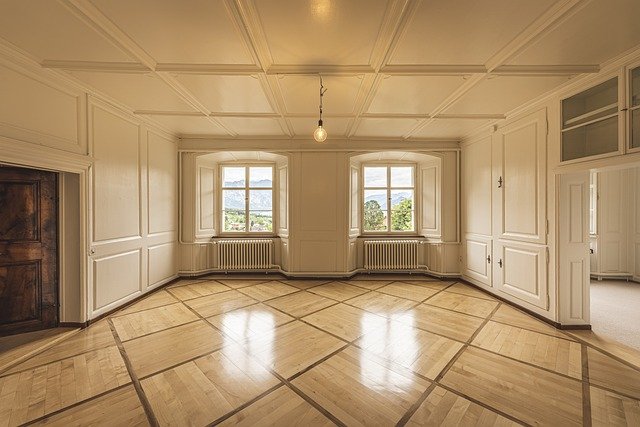Illuminating Spaces: The Art of Light Sculpting in Interior Design
The interplay of light and shadow has long captivated artists and designers, but a new trend is taking this fascination to extraordinary heights. Light sculpting, an innovative approach to interior illumination, is revolutionizing how we perceive and interact with our living spaces. This cutting-edge technique goes beyond traditional lighting methods, transforming rooms into dynamic canvases where light becomes a tangible, malleable medium. As homeowners seek to create more immersive and personalized environments, light sculpting emerges as a powerful tool for crafting ambiance, enhancing architecture, and elevating the very essence of interior design.

As LED technology advanced and became more accessible, designers began to explore new possibilities for integrating light as a core element of interior architecture. The ability to control color, intensity, and direction with unprecedented precision opened up a world of creative potential. Today, light sculpting represents a paradigm shift in how we approach lighting design, moving from purely functional to deeply experiential.
Techniques and Technologies
At the heart of light sculpting are sophisticated LED systems and smart controls that allow for intricate manipulation of light. Designers employ a variety of techniques to achieve stunning effects:
-
Grazing: Positioning lights close to walls to accentuate textures and create dramatic shadows.
-
Washing: Using diffused light to bathe surfaces in a soft, even glow.
-
Backlighting: Placing lights behind translucent panels or objects to create depth and mystery.
-
Projection mapping: Employing high-tech projectors to cast dynamic images and patterns onto surfaces.
-
Color mixing: Utilizing RGB LEDs to produce an infinite spectrum of hues and transitions.
These techniques are often combined and choreographed to create complex light compositions that can change throughout the day or respond to user input.
Spatial Transformation Through Light
One of the most compelling aspects of light sculpting is its ability to fundamentally alter the perception of space. By strategically placing and manipulating light sources, designers can:
-
Expand or contract perceived room dimensions
-
Highlight architectural features or disguise flaws
-
Create visual partitions without physical barriers
-
Guide movement and focus attention
-
Evoke specific moods or atmospheres
For example, in a compact urban apartment, light sculpting can be used to create the illusion of higher ceilings or wider rooms. In larger spaces, it can carve out intimate nooks or define functional areas without the need for walls.
The Psychology of Illumination
Light sculpting taps into the profound psychological effects of light on human behavior and wellbeing. Research has shown that exposure to different light qualities can influence everything from circadian rhythms to cognitive performance and emotional states. By incorporating these insights into design, light sculptors can create environments that not only look beautiful but also support the inhabitants’ health and productivity.
Cool, bright light in workspaces can enhance focus and alertness, while warm, dim lighting in relaxation areas promotes calmness and social interaction. Dynamic lighting systems can even mimic the natural progression of daylight, helping to regulate sleep-wake cycles in spaces with limited natural light.
Sustainability and Energy Efficiency
As environmental concerns become increasingly pressing, light sculpting offers a unique approach to sustainable design. By using highly efficient LED technology and smart controls, these systems can significantly reduce energy consumption compared to traditional lighting setups. Moreover, the ability to create dramatic effects with light alone can reduce the need for energy-intensive physical renovations or frequent redecorating.
Some innovative designs are even incorporating solar-powered elements or kinetic features that harvest energy from movement within the space, further minimizing environmental impact.
Personalization and Adaptability
One of the most exciting aspects of light sculpting is its potential for personalization. With programmable systems, residents can adjust their lighting environment to suit different activities, moods, or occasions. A living room might transform from a bright, energizing space for daytime work to a cozy, intimate setting for evening relaxation with just a few taps on a smartphone.
This adaptability extends to seasonal changes as well. Light sculptures can be programmed to complement natural light conditions throughout the year, helping to combat the effects of shorter winter days or create a refreshing atmosphere during hot summers.
Challenges and Considerations
While light sculpting offers immense creative possibilities, it also presents unique challenges. The initial cost of installing advanced lighting systems can be significant, and there’s a learning curve associated with programming and maintaining these setups. Additionally, as with any technology-dependent design element, there’s a risk of obsolescence as newer systems emerge.
Designers must also be mindful of potential light pollution, especially in residential settings. Careful planning is necessary to ensure that light sculpting enhances rather than disrupts the overall living experience.
The Future of Illuminated Interiors
As technology continues to advance, the potential applications for light sculpting are boundless. We’re likely to see increased integration with other smart home systems, allowing lighting to respond dynamically to factors like occupancy, ambient temperature, or even the inhabitants’ biometric data.
Developments in materials science may lead to new surfaces and objects that interact with light in novel ways, expanding the palette available to designers. And as augmented reality technology matures, we might see hybrid designs that blend physical light sculptures with virtual elements, creating truly immersive and interactive environments.
Light sculpting represents a exciting frontier in interior design, offering a perfect synthesis of art, technology, and functionality. As this trend continues to evolve, it promises to transform our living spaces into fluid, responsive environments that adapt to our needs and inspire our imaginations. The future of interior design is bright indeed, illuminated by the endless possibilities of sculpted light.





